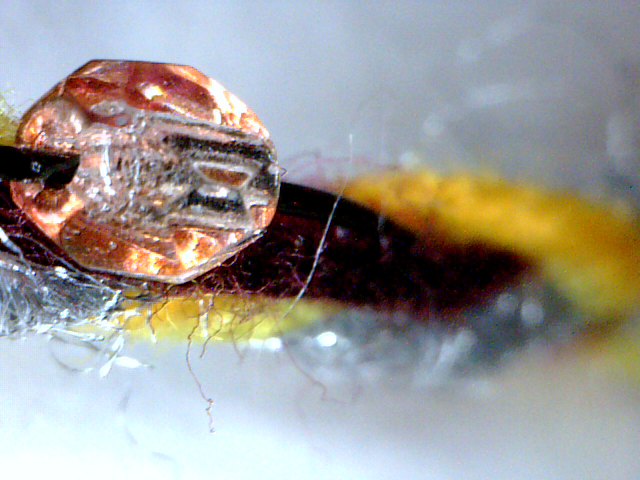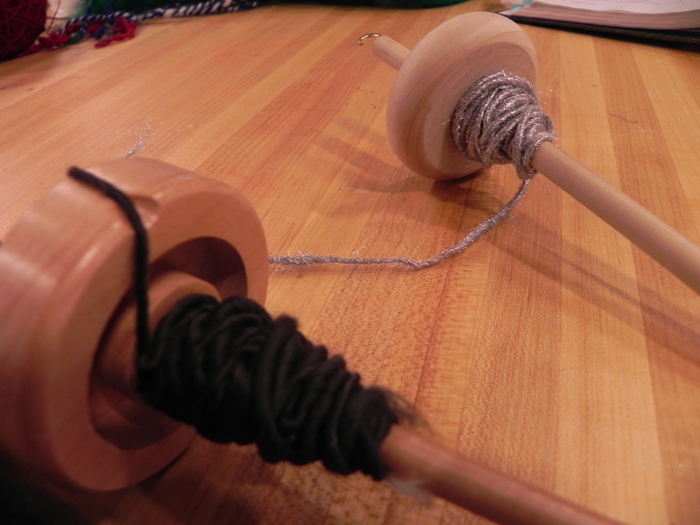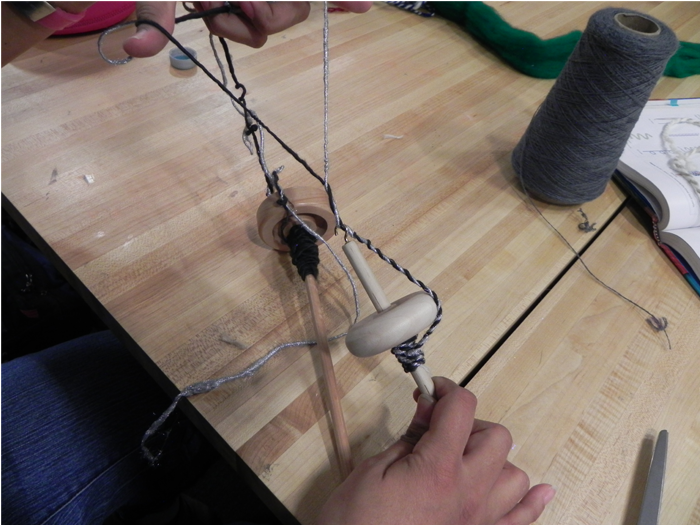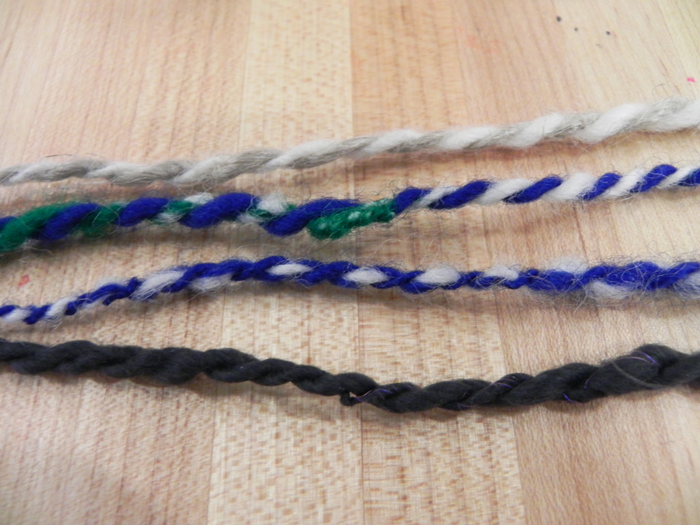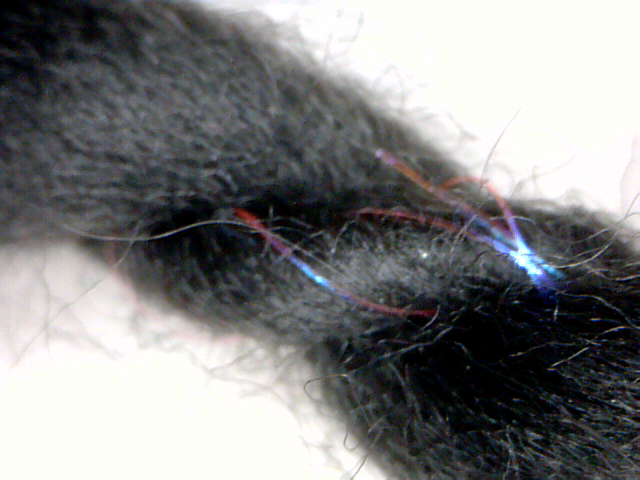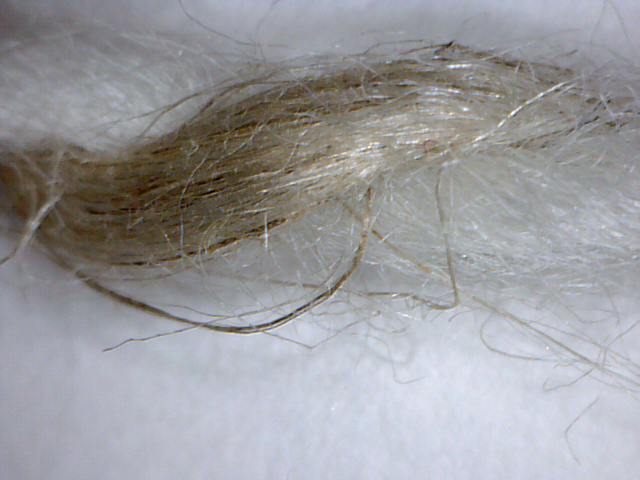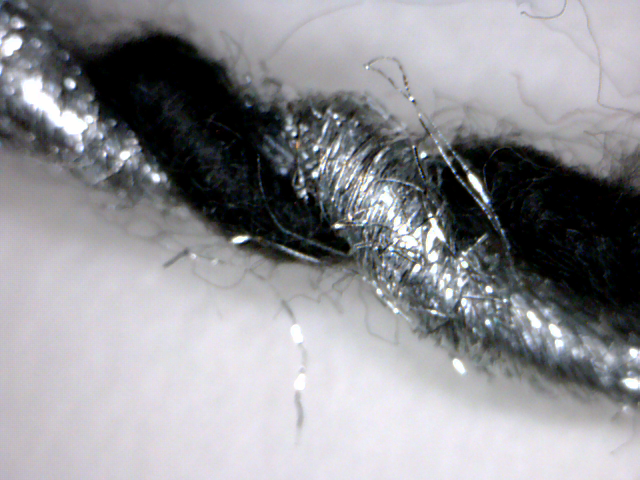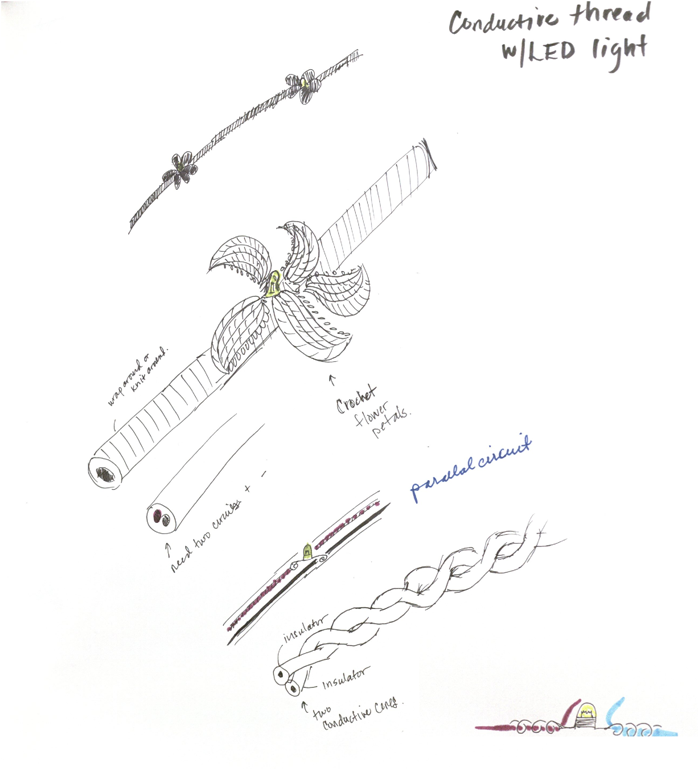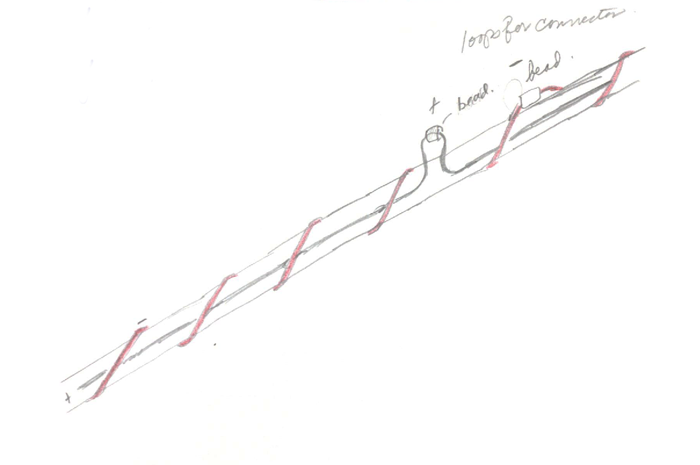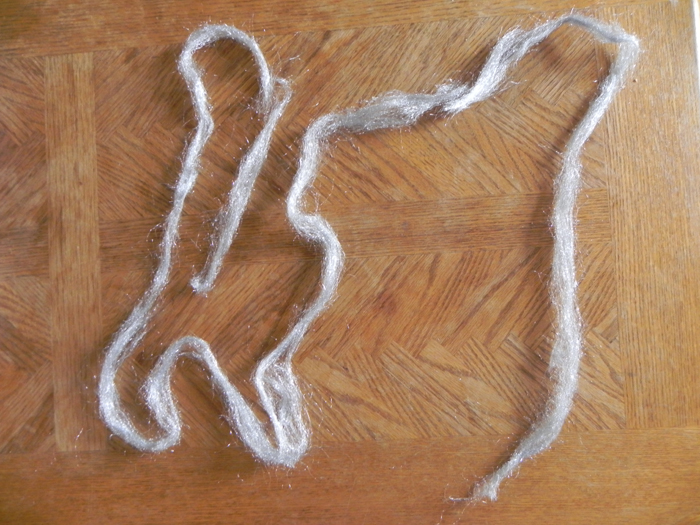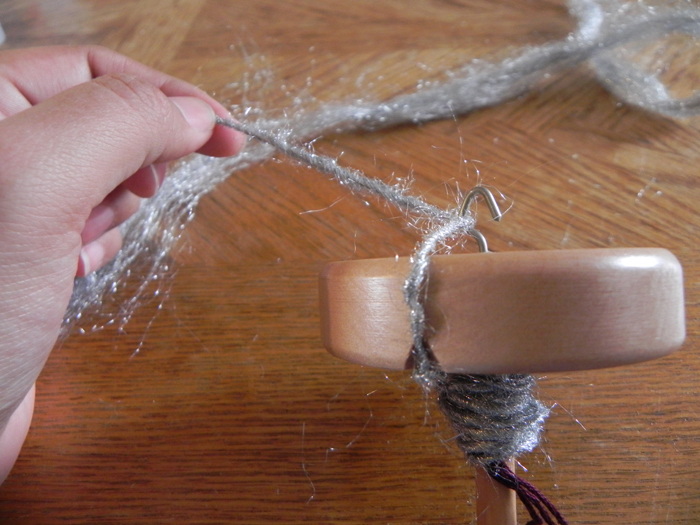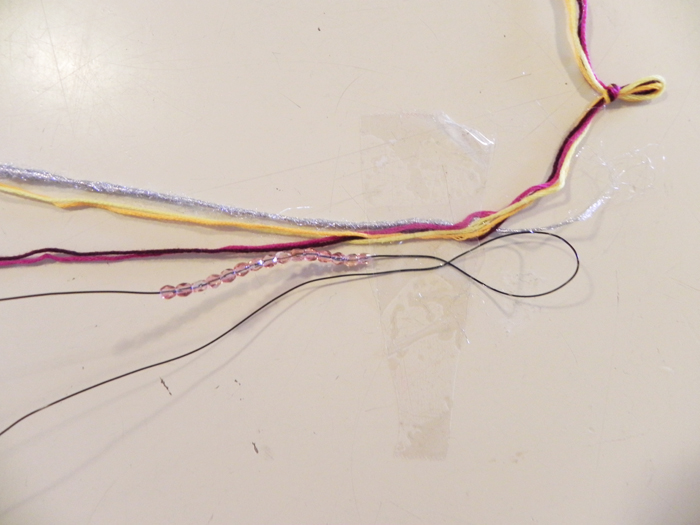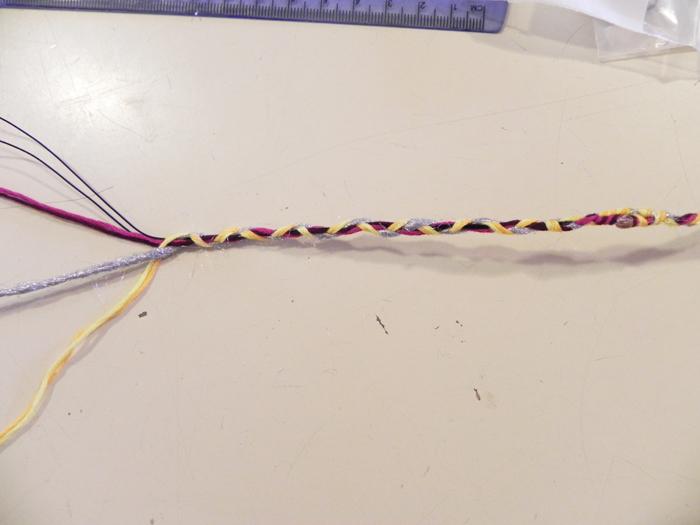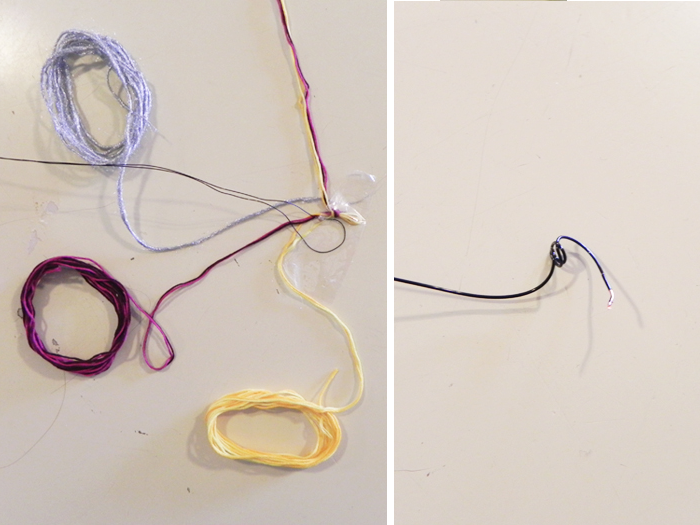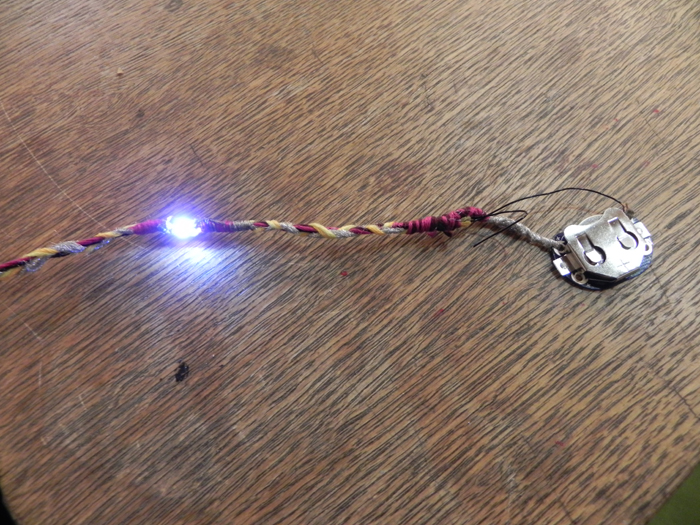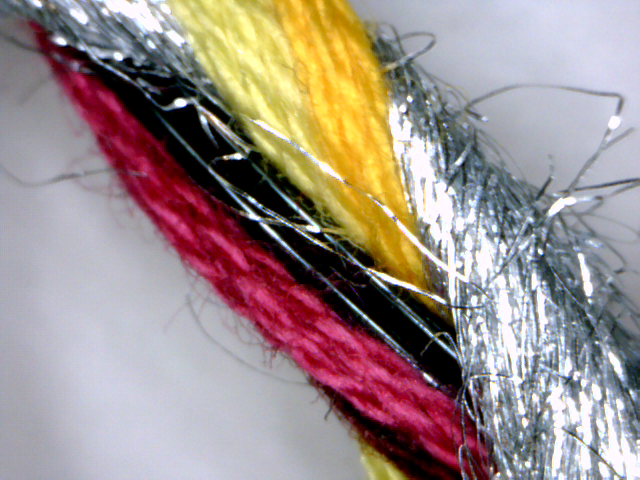Plug-in Yarn
by KristyKat
During the spinning class with Kanjun, I experimented with spinning different fibers such as cotton, hemp, bamboo and aluminum. Over the weekend, while doing research for my thesis, I became inspired by Archigram’s plug-in work ( i.e. Plug-in Capsule Home, Montreal Tower, Plug-in City, University Node, Gasket Homes and Plug-in Clip) and I created a plug-in yarn.
Kanjun’s Spinning Workshop
Below is the work I did during Kanjun’s spinning class.
Yarn Specs:
Bamboo Fiber: 0.25″ / 18″ / 2 ply / 3.5″ / Clockwise / 4 / not conductive
Hemp + Cotton Fibers: .667″ / 27.5″ / 2 ply / clockwise / 4.5 / not conductive
Bamboo + Aluminum Fibers: .667″ / 74″ /2 ply / clockwise / 3 / ?? will measure in class
Plug-in Yarn
Initially, I planned to create a circuit yarn that had LED lights with flowers crocheted around the light.
Then, with inspiration from Archigram, I thought it’d be better if other components could later be attached. I thought of designating positive and negative wires with beads and that one wire should be insulated to lessen the chances of the + & – contacting and shorting the circuit.
From my previous experience of working with Aluminum fiber, I pre-drafted it for easier spinning.
I taped the ends of my fibers for easier braiding. Below, I’m using an aluminum fiber for the positive charge and a copper insulated wire I found in a bead shop at Harvard square for the negative charge. The other fibers are old strands I had in my yarn collection that I previously used for embroidery. I added some beads for the negative wire to show places on the wire where additional components (i.e. LED light) could be added – though, they could be added anywhere.
To prevent tangles during braiding, I looped some material and at the end of the copper-insulated wire, I created another loop to prevent the beads from falling off during braiding.
The finished product. After braiding, I added a LED light near a bead. I also had another LED at the end of the yarn and this flickered for a few moments and then it never flickered again. I think that this may be caused by the aluminum fibers as they tend to spread everywhere and may be causing some short circuiting.
Yarn Specs:
Aluminum fiber + embroidery fibers + copper insulated wire: .667″ / 79″ / 7 ply / braided – both counter and clockwise twist? / 3 braids per inch / ?? will be measure conductivity in class.


